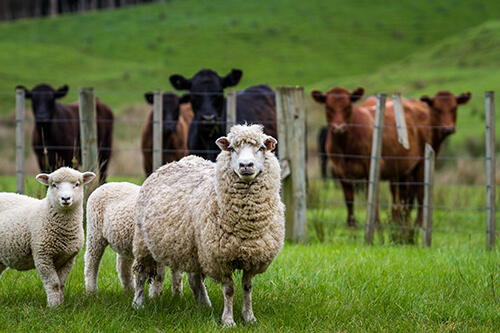Advantages of Organic Trace Minerals
Feb 10, 2020

Minerals required by livestock are commonly divided into two general categories: macrominerals and microminerals. Macrominerals are those required in relatively large amounts, and microminerals, in very small amounts. Microminerals, also referred to as trace minerals, are only needed in quantities measured in milligrams or micrograms, but are vitally important for reproduction, immunity, and proper growth and development. Copper, zinc, manganese, and selenium are just some of the trace minerals typically supplemented to ensure proper health and performance of our animals.
At the molecular level, supplemental trace minerals are found in two basic forms: organic and inorganic. By definition, any metal ion linked to a carbon-containing molecule is considered an “organic” trace mineral. Inorganic minerals then are those bonded to an inorganic molecule such as sulfate or oxide (no carbon), making them simpler and less expensive to produce. Inorganics can serve well as the base of trace mineral supplementation, but their usefulness is limited by the animal’s ability to absorb them in the small intestine.
Organic trace minerals have higher bioavailability since they are more readily absorbed than inorganics. This is true because the molecule binding the trace mineral is one rapidly taken up in the gut. However, even within the classification of organics there are differences due to chemical properties. Those organic trace minerals complexed with amino acids have proven to offer the most potential for enhanced performance in farm livestock species. Look for them in the list of ingredients on the label.
At the molecular level, supplemental trace minerals are found in two basic forms: organic and inorganic. By definition, any metal ion linked to a carbon-containing molecule is considered an “organic” trace mineral. Inorganic minerals then are those bonded to an inorganic molecule such as sulfate or oxide (no carbon), making them simpler and less expensive to produce. Inorganics can serve well as the base of trace mineral supplementation, but their usefulness is limited by the animal’s ability to absorb them in the small intestine.
Organic trace minerals have higher bioavailability since they are more readily absorbed than inorganics. This is true because the molecule binding the trace mineral is one rapidly taken up in the gut. However, even within the classification of organics there are differences due to chemical properties. Those organic trace minerals complexed with amino acids have proven to offer the most potential for enhanced performance in farm livestock species. Look for them in the list of ingredients on the label.